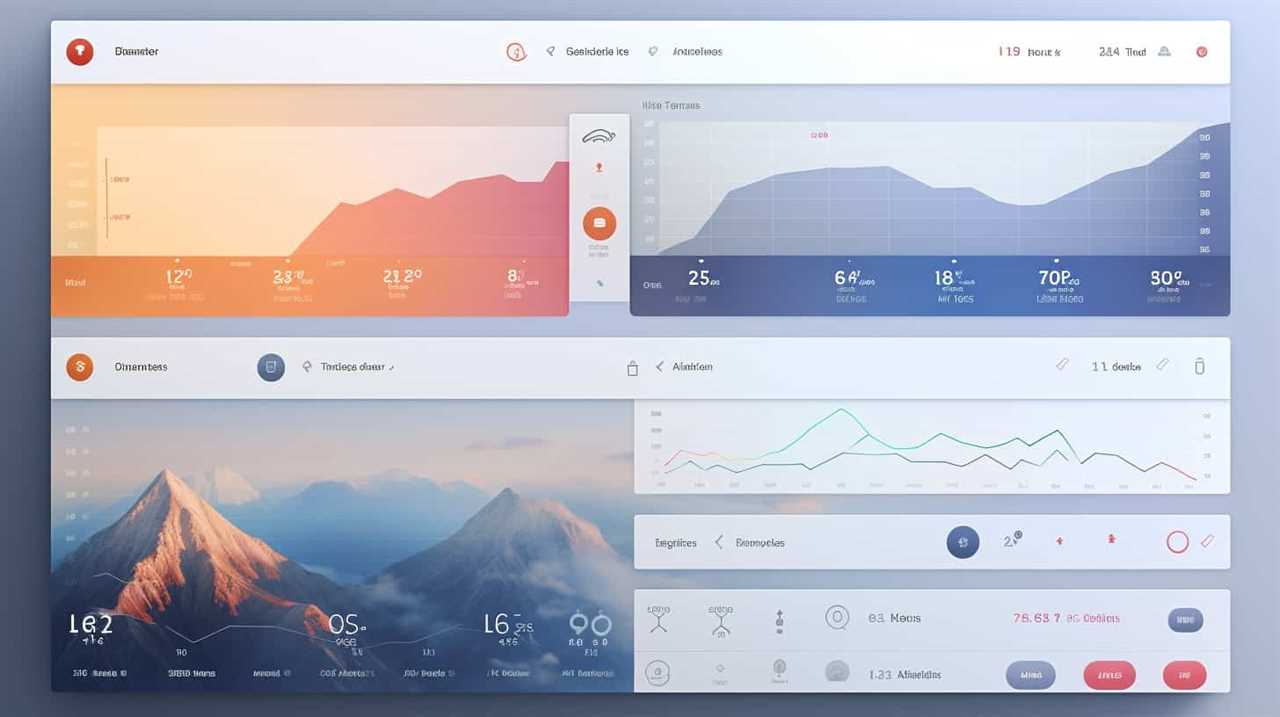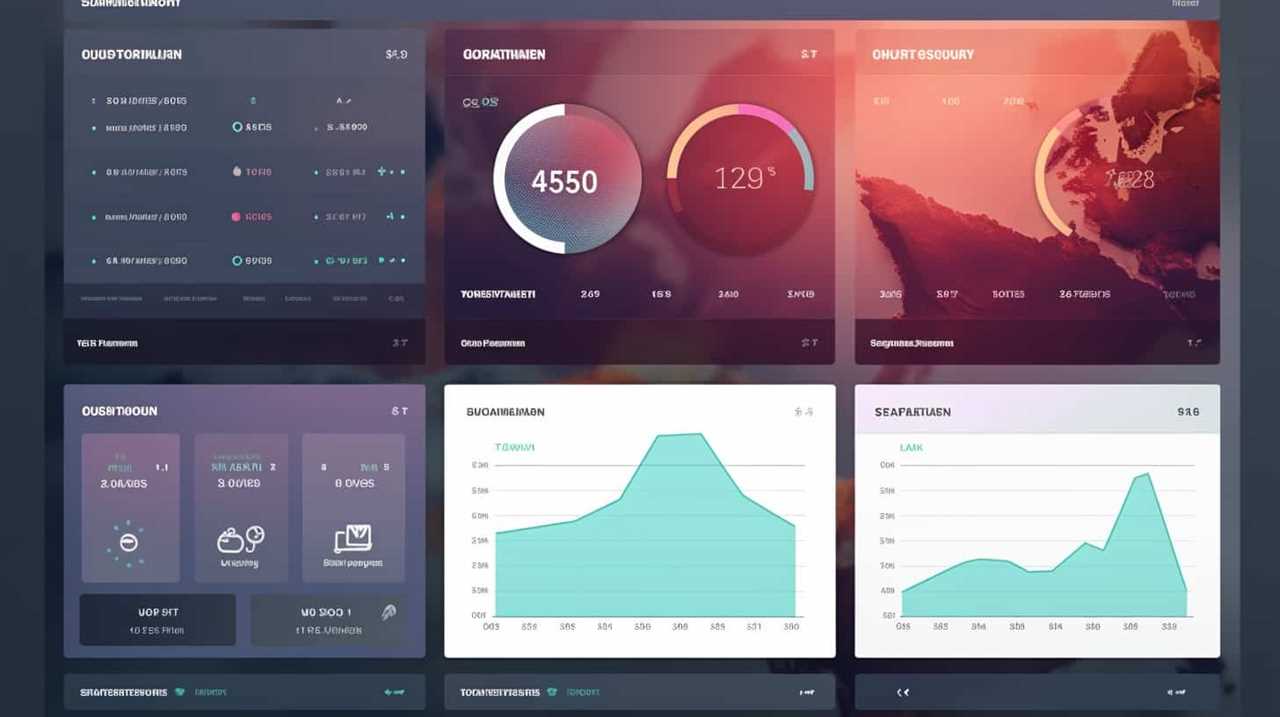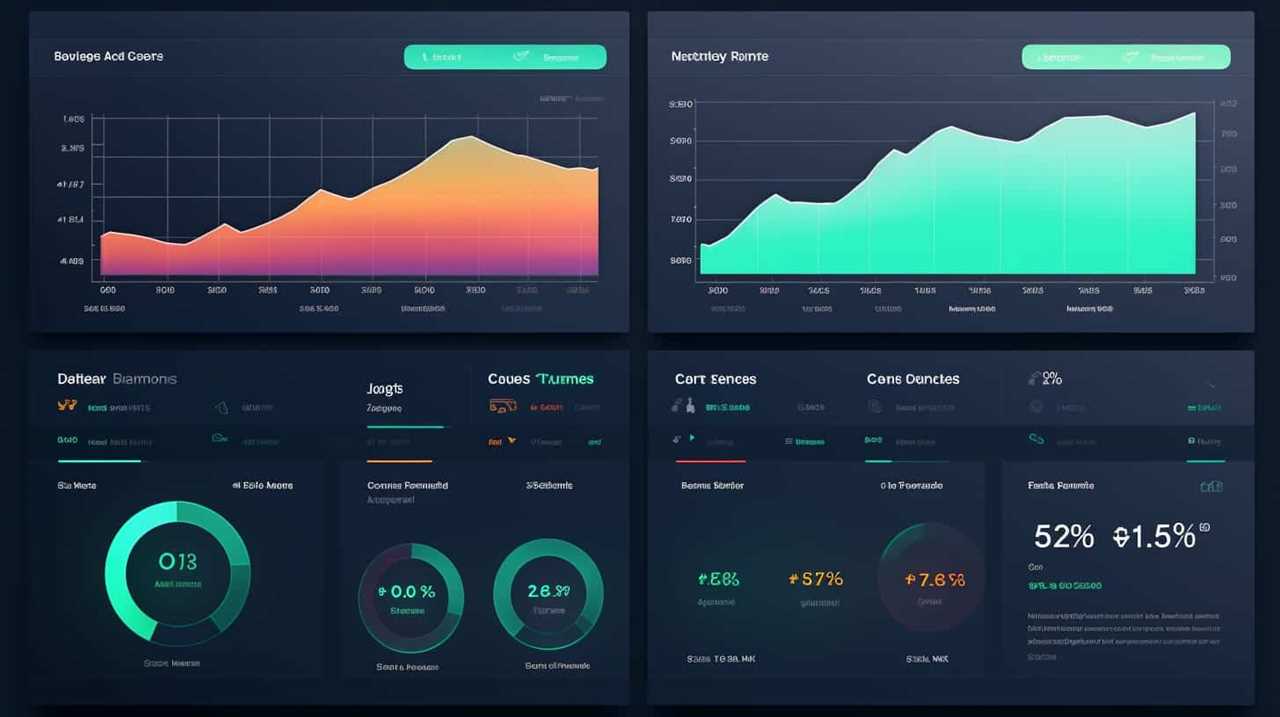We’re all well acquainted with the saying, ‘knowledge is power,’ a notion that holds particularly true within the area of technical support skills, where this concept is undeniably spot-on.
As a team, we possess the active listening, problem solving, and communication skills necessary to tackle any issue that comes our way.
With our technical knowledge, patience, and empathy, we adapt to the needs of our customers, providing top-notch customer service.
Our troubleshooting techniques and remote support skills ensure that we can resolve any problem, no matter how complex.

Key Takeaways
- Active listening techniques are crucial for effective communication in technical support
- A solid foundation of technical knowledge is essential in technical support
- Continuous learning and staying updated with the latest technical knowledge is crucial in technical support
- Problem-solving abilities and adaptability are important skills in technical support
Active Listening
Active listening is a crucial skill for technical support professionals. It involves actively engaging with the speaker, focusing on their words, and understanding their message. To effectively practice active listening, there are several techniques that can be employed.
First, maintaining eye contact and using nonverbal cues, such as nodding or leaning in, shows the speaker that you’re fully present and attentive.
Second, paraphrasing and summarizing the speaker’s message helps to ensure understanding and clarify any confusion.
Additionally, asking open-ended questions encourages the speaker to provide more information and allows for a deeper understanding of their needs.

Problem Solving
To address technical issues effectively, we employ a systematic approach to problem solving. Problem solving techniques and critical thinking are essential skills in the field of technical support.
When faced with a problem, we analyze and break it down into smaller components to identify the root cause. We use logical reasoning and draw upon our knowledge and experience to develop potential solutions. This involves considering various possibilities and evaluating the pros and cons of each option. We prioritize these solutions based on their feasibility and impact.
Once a solution is implemented, we test and verify its effectiveness. Problem solving requires patience, creativity, and adaptability to different situations.
Now, let’s explore the next important skill in technical support: communication skills.

Communication Skills
When it comes to communication skills in technical support, active listening techniques and nonverbal communication cues are crucial.
By actively listening to customers, we can better understand their issues and provide effective solutions.
Additionally, being aware of nonverbal cues such as facial expressions and body language can help us gauge customer satisfaction and adjust our approach accordingly.
Active Listening Techniques
In our role as technical support professionals, we rely on effective communication skills, including the use of active listening techniques. Active listening is a crucial skill that allows us to fully understand and respond to the needs of our customers. Here are four effective strategies for active listening:

- Pay attention: Focus on the customer’s words and non-verbal cues, such as tone of voice and body language.
- Show empathy: Demonstrate understanding and compassion towards the customer’s problems and concerns.
- Ask clarifying questions: Seek clarification to ensure that you fully understand the customer’s issue.
- Provide feedback: Summarize what the customer has said to confirm understanding and show that you’re engaged in the conversation.
Nonverbal Communication Cues
Our ability to interpret and respond to the nonverbal communication cues of our customers is an essential part of our technical support skills.
Nonverbal communication techniques, such as observing body language signals, can provide valuable insights into a customer’s thoughts and feelings. By paying attention to their facial expressions, gestures, and posture, we can better understand their level of satisfaction or frustration. For example, crossed arms or a furrowed brow may indicate dissatisfaction, while a smile or nod may indicate understanding.
Responding appropriately to these cues can help us build rapport and establish trust with our customers. Understanding nonverbal communication cues allows us to tailor our responses and provide a more effective and empathetic support experience.
Transitioning into the next section about technical knowledge, our ability to combine nonverbal communication skills with our technical expertise ensures a comprehensive and well-rounded support approach.

Technical Knowledge
When it comes to technical support skills, having a solid foundation of technical knowledge is essential.
However, it’s important to acknowledge that there may be knowledge gaps that need to be addressed.
Continuous learning is crucial in order to stay updated with the ever-evolving technology landscape.
Essential Tech Skills
We have found that possessing a strong foundation in technical knowledge is crucial for effective technical support. To excel in this field, it’s essential to develop the following tech skills:

- Troubleshooting: Being able to identify and resolve technical issues quickly and efficiently is a fundamental skill for any support technician.
- Networking: Understanding how networks function and being able to troubleshoot network connectivity problems is vital for providing effective support.
- Operating Systems: Having in-depth knowledge of different operating systems, such as Windows, macOS, and Linux, enables technicians to address software-related issues.
- Remote Support Techniques: Mastering remote support tools and techniques allows technicians to assist customers remotely, saving time and resources.
Knowledge Gaps and Gaps
Identifying and addressing knowledge gaps and technical deficiencies is crucial for improving technical support skills. It’s important for technical support professionals to continuously acquire and retain knowledge to stay up-to-date with the ever-evolving technology landscape.
Knowledge acquisition involves actively seeking out new information, whether through self-study, training programs, or collaborating with peers. However, acquiring knowledge is only the first step. To truly enhance technical support skills, it’s essential to retain and apply that knowledge effectively. This requires finding ways to reinforce and review the information learned, such as through regular practice, documentation, and knowledge-sharing platforms.
By actively addressing knowledge gaps and deficiencies, technical support professionals can ensure that they’re equipped with the necessary expertise to provide efficient and effective support.
Transitioning into the next section about continuous learning, let’s explore why ongoing learning is a fundamental requirement in this field.

Continuous Learning Required
To enhance our technical support skills, we must prioritize continuous learning and staying updated with the latest technical knowledge. In the fast-paced world of technology, it’s vital to engage in continuous improvement and professional development.
Here are four reasons why continuous learning is crucial for technical support professionals:
- Adapt to new technologies: By continuously learning, we can adapt to emerging technologies and stay ahead of the curve.
- Solve complex issues: Up-to-date technical knowledge enables us to effectively troubleshoot and resolve complex customer issues.
- Provide accurate and timely assistance: Learning new skills and staying updated ensures that we can provide accurate and timely assistance to customers.
- Enhance problem-solving abilities: Continuous learning sharpens our problem-solving abilities, allowing us to tackle even the most challenging technical problems.
By embracing continuous learning, we can become experts in our field and provide exceptional technical support.
Transitioning into the next section, patience and empathy are equally important in delivering a superior customer experience.

Patience and Empathy
Frequently, we demonstrate patience and empathy in providing technical support. Managing frustration and practicing emotional intelligence are essential skills in this field.
When customers encounter technical difficulties, they may become frustrated or overwhelmed. It’s our responsibility to remain calm and understanding, helping them navigate through their issues. This requires us to listen actively, validate their concerns, and provide clear explanations.
By showing patience, we create a supportive environment that allows customers to feel heard and valued. We also need to exercise empathy, putting ourselves in their shoes and understanding their emotions. This helps us build trust and rapport with customers, enhancing their overall experience.
Patience and empathy are crucial traits for technical support professionals, enabling us to provide exceptional service and resolve issues effectively.

Time Management
When it comes to time management in technical support, there are several key points to consider.
First, it’s important to prioritize tasks effectively to ensure that urgent issues are addressed promptly.
Second, setting realistic deadlines helps to manage workload and avoid unnecessary stress.
Lastly, avoiding time-wasting activities, such as excessive social media use or unnecessary meetings, allows for better productivity and efficiency.

Prioritizing Tasks Effectively
As technical support professionals, we consistently prioritize tasks to manage our time effectively. Prioritizing workload is crucial in ensuring that we address the most critical issues and meet customer expectations.
Here are four strategies we can use to prioritize tasks effectively:
- Urgency and Impact: Assess the urgency and impact of each task to determine which ones require immediate attention.
- Deadline Management: Identify tasks with specific deadlines and prioritize them accordingly.
- Customer Priority: Give priority to tasks that directly impact customer satisfaction and prioritize them based on customer needs and expectations.
- Complexity and Effort: Consider the complexity and effort required for each task and prioritize accordingly, focusing on the ones that require more time and attention.
Setting Realistic Deadlines
To effectively manage our workload, we prioritize tasks by setting realistic deadlines. Setting realistic deadlines is crucial in ensuring that we’re able to meet our commitments and deliver quality work. By setting realistic expectations for ourselves and our team, we can avoid overpromising and underdelivering.
It’s important to consider factors such as the complexity of the task, available resources, and potential roadblocks when setting deadlines. This requires careful planning and communication with stakeholders.

Meeting deadlines effectively requires a proactive approach, regular check-ins, and the ability to adapt and adjust as necessary. By consistently setting realistic deadlines and effectively managing our time, we can ensure that we deliver our work on time and meet the expectations of our clients and colleagues.
Avoiding Time-Wasting Activities
One key skill in technical support is efficiently managing our time by avoiding time-wasting activities. By implementing effective time management techniques, we can optimize our productivity and ensure that we’re making the most of our working hours.
To avoid wasting time, we should:
- Prioritize tasks: Identify and focus on the most critical and urgent issues first.
- Minimize distractions: Limit interruptions by turning off notifications, closing irrelevant tabs, and creating a dedicated workspace.
- Delegate when possible: Assign tasks to team members who are better equipped to handle them, freeing up your time for more important responsibilities.
- Streamline processes: Look for opportunities to automate repetitive tasks or find more efficient problem-solving strategies.
Adaptability
In our line of work, we often find ourselves in situations where we need to adapt to constantly changing technology and customer needs. Adapting to change is a crucial skill for technical support professionals.

We must be flexible in problem solving, able to quickly adjust our approach to meet the specific requirements of each situation. This means staying up-to-date with the latest advancements in technology and being open to new ways of solving problems.
Our ability to adapt allows us to provide effective and efficient support to our customers, ensuring their satisfaction and resolving their issues in a timely manner.
As we transition into the subsequent section about customer service, it’s important to recognize that adaptability is just one aspect of providing exceptional support.
Customer Service
As technical support professionals, our adaptability in problem solving seamlessly transitions into our commitment to providing exceptional customer service. Our goal is to ensure customer satisfaction by effectively addressing their needs and concerns. Here are four key elements of our customer service approach:

- Active Listening: We attentively listen to our customers, allowing us to fully understand their issues and provide appropriate solutions.
- Empathy: We recognize and validate the emotions our customers may be experiencing, showing them that we genuinely care about their concerns.
- Timely Communication: We respond promptly to customer inquiries, keeping them informed about the progress of their case and setting realistic expectations.
- Conflict Resolution: In situations where conflicts arise, we remain calm, professional, and strive to find a mutually beneficial resolution.
Troubleshooting Techniques
To effectively resolve technical issues, we employ a range of troubleshooting techniques that allow us to quickly identify and address the root cause of the problem. Our troubleshooting strategies are designed to provide efficient and effective solutions to common technical issues.
One of the first steps we take is to gather information from the customer about the problem they’re experiencing. This helps us narrow down possible causes and determine the most appropriate troubleshooting approach.
We then use diagnostic tools and techniques to systematically isolate and test various components of the system. This enables us to pinpoint the source of the issue and implement the necessary fix.
Throughout the troubleshooting process, we maintain clear communication with the customer, explaining our actions and providing updates on our progress.

Remote Support Skills
Our remote support skills allow us to efficiently assist customers in resolving technical issues. When providing remote customer support, there are several techniques that we employ to ensure effective troubleshooting.
These techniques include:
- Remote Desktop Access: We use remote desktop software to access the customer’s computer and diagnose the issue directly. This allows us to see the problem firsthand and provide step-by-step instructions for resolution.
- Screen Sharing: By sharing our screen with the customer, we can demonstrate troubleshooting steps visually. This helps in guiding the customer through the process and ensures that they understand each step.
- Effective Communication: Clear and concise communication is crucial in remote support. We actively listen to the customer’s concerns, ask relevant questions, and provide precise instructions to resolve the issue.
- Documentation and Knowledge Base: We maintain a comprehensive knowledge base and document each troubleshooting step. This helps us in providing consistent and efficient support to our customers.
Frequently Asked Questions
How Can I Improve My Active Listening Skills in a Technical Support Role?
To improve our active listening skills, we can focus on techniques such as maintaining eye contact, nodding to show understanding, and paraphrasing to ensure we comprehend the customer’s concerns in a technical support role. Nonverbal communication plays a vital role in effective communication.
What Are Some Effective Problem-Solving Strategies for Technical Support Issues?
In our experience, effective problem-solving strategies for technical support issues involve utilizing problem-solving techniques and troubleshooting strategies. It’s crucial to approach each issue systematically and consider all possible solutions.

How Can I Enhance My Communication Skills When Dealing With Complex Technical Information?
To enhance our communication skills when dealing with complex technical information, we can employ various communication techniques. We should strive to explain technical jargon in a concise, precise, and clear manner to ensure understanding by our audience.
What Are Some Key Areas of Technical Knowledge That Are Essential for Providing Technical Support?
When it comes to providing technical support, there are key areas of technical knowledge that are essential. Technical troubleshooting skills and strong customer service skills are crucial for effectively assisting customers with their technical issues.
How Can I Develop More Patience and Empathy When Assisting Frustrated Customers in a Technical Support Role?
To develop more patience and empathy when assisting frustrated customers, we focus on developing resilience and managing customer expectations. This helps us provide better support and ensure customer satisfaction in our technical support role.
Conclusion
In conclusion, mastering technical support skills is essential for success in the field.

From active listening and problem-solving to communication and technical knowledge, these abilities are crucial for providing effective assistance to customers.
Additionally, patience, empathy, and adaptability are vital traits that can help navigate challenging situations.
With the right combination of customer service and troubleshooting techniques, along with remote support skills, technical support professionals are well-equipped to handle any issue that comes their way.
Stay tuned for more tips and tricks to enhance your technical support expertise.











